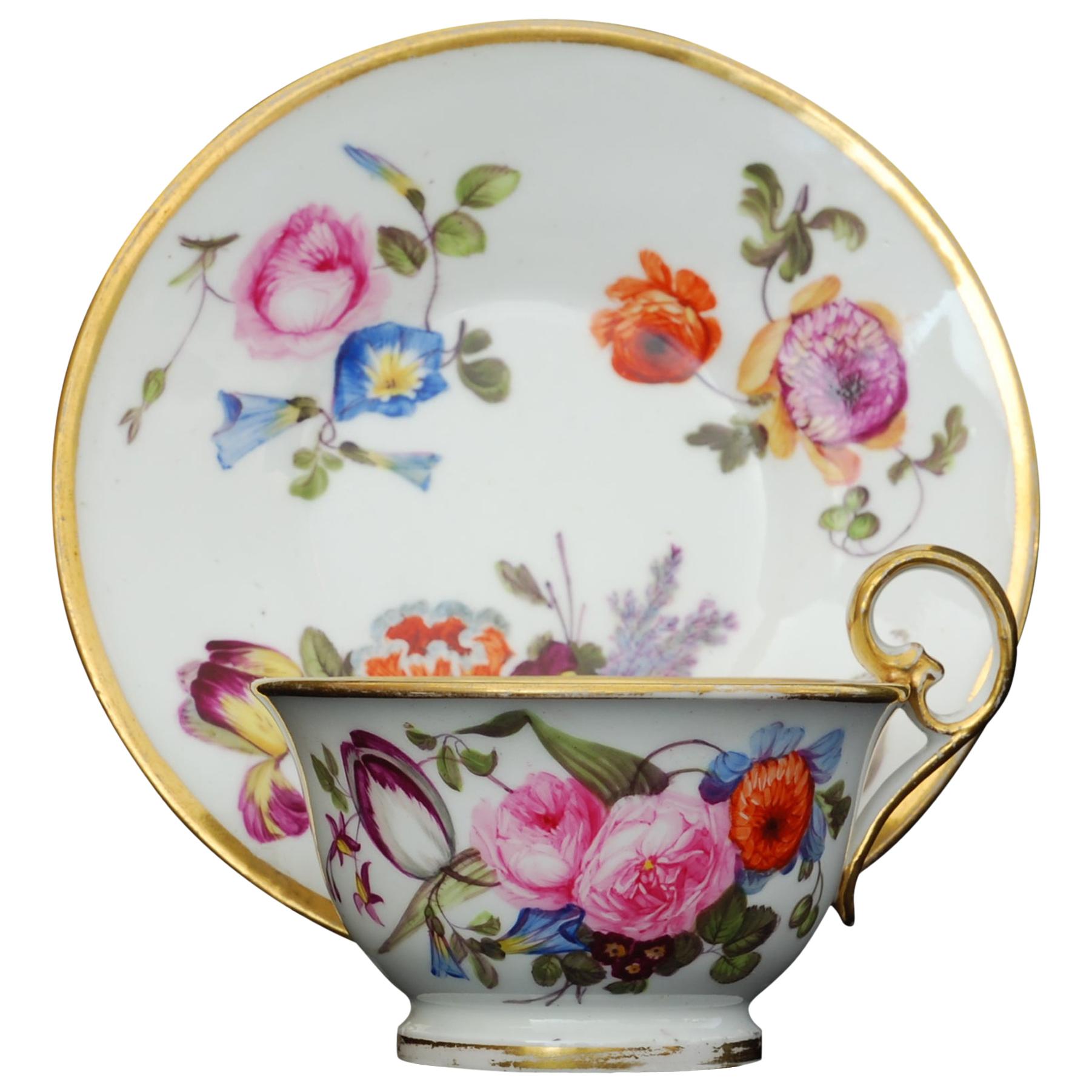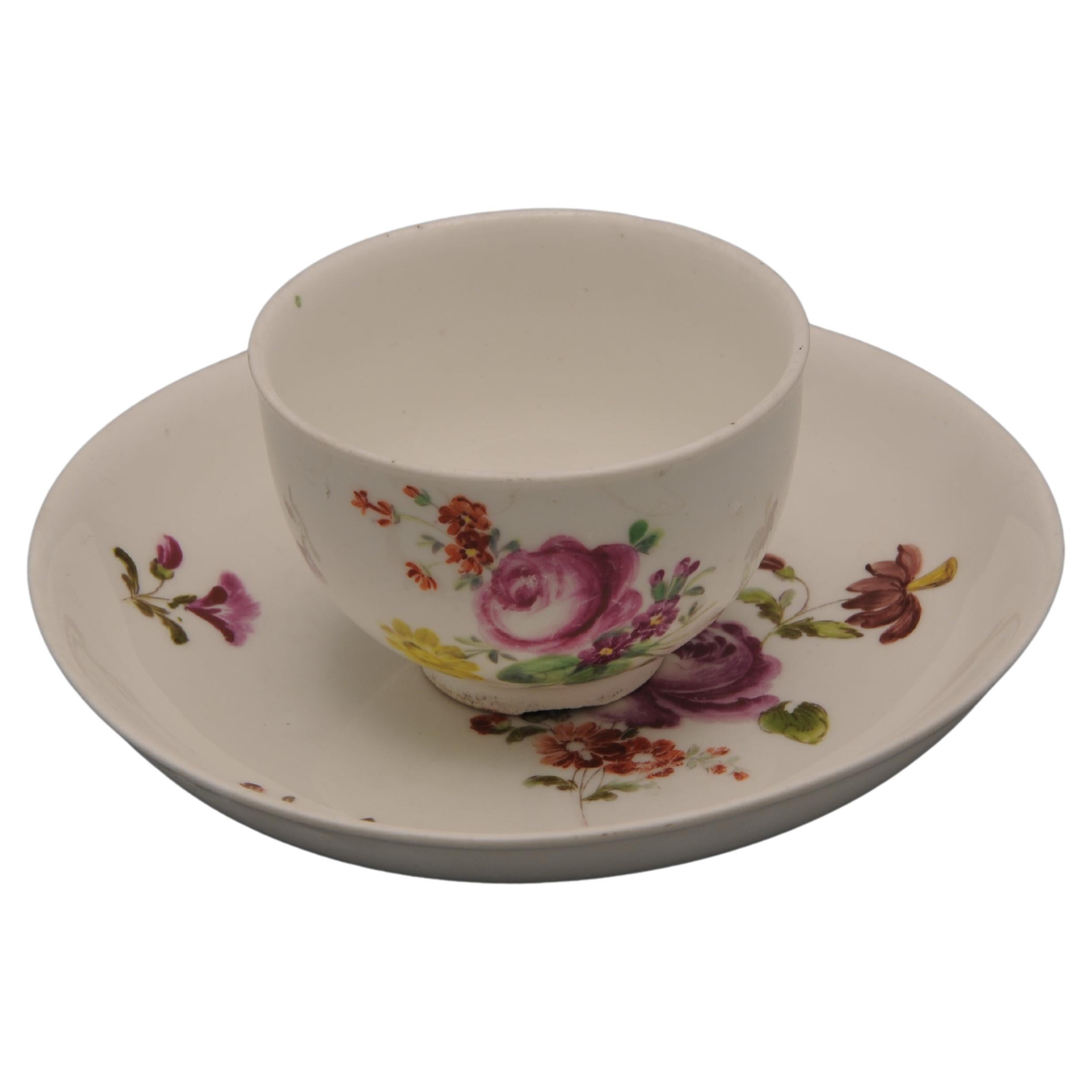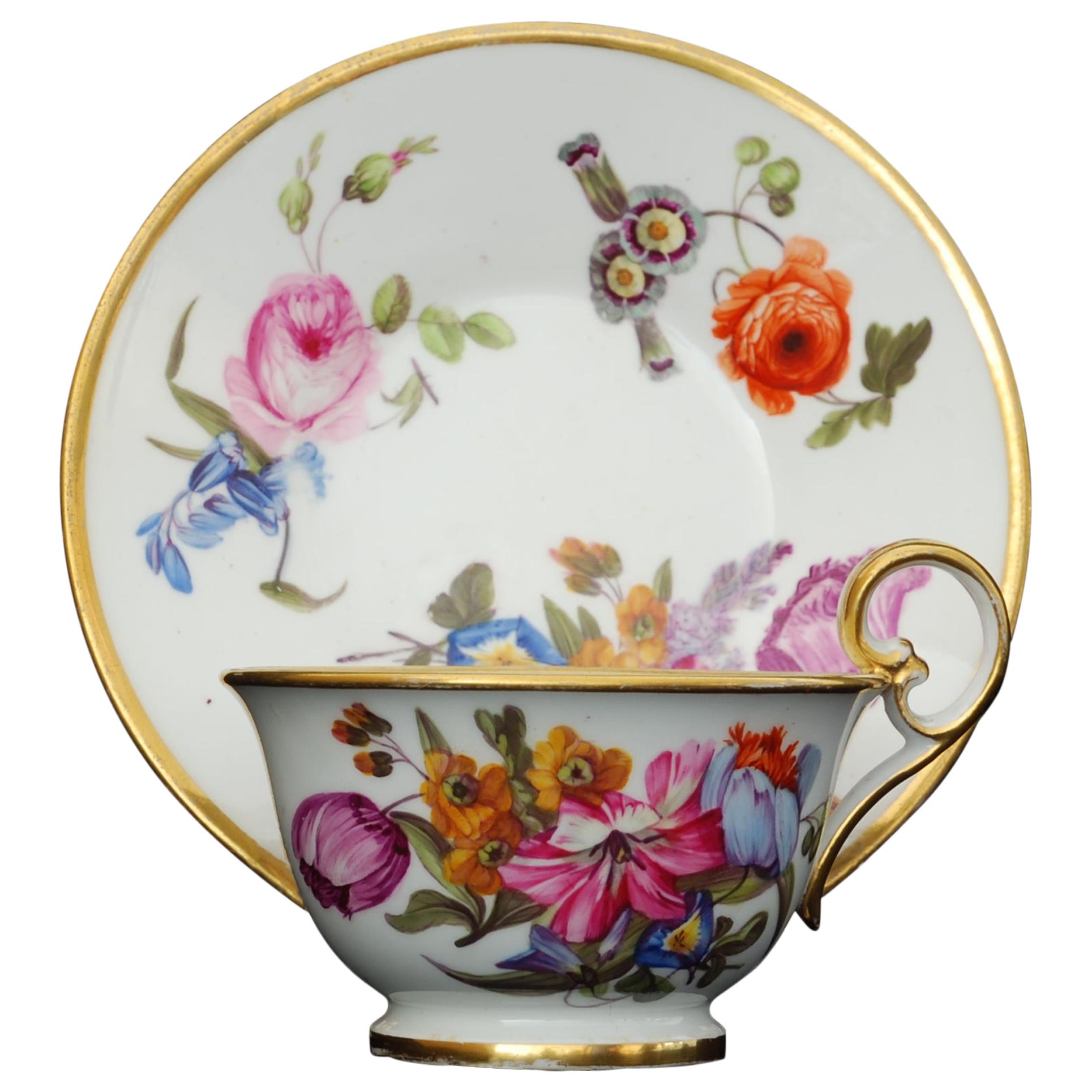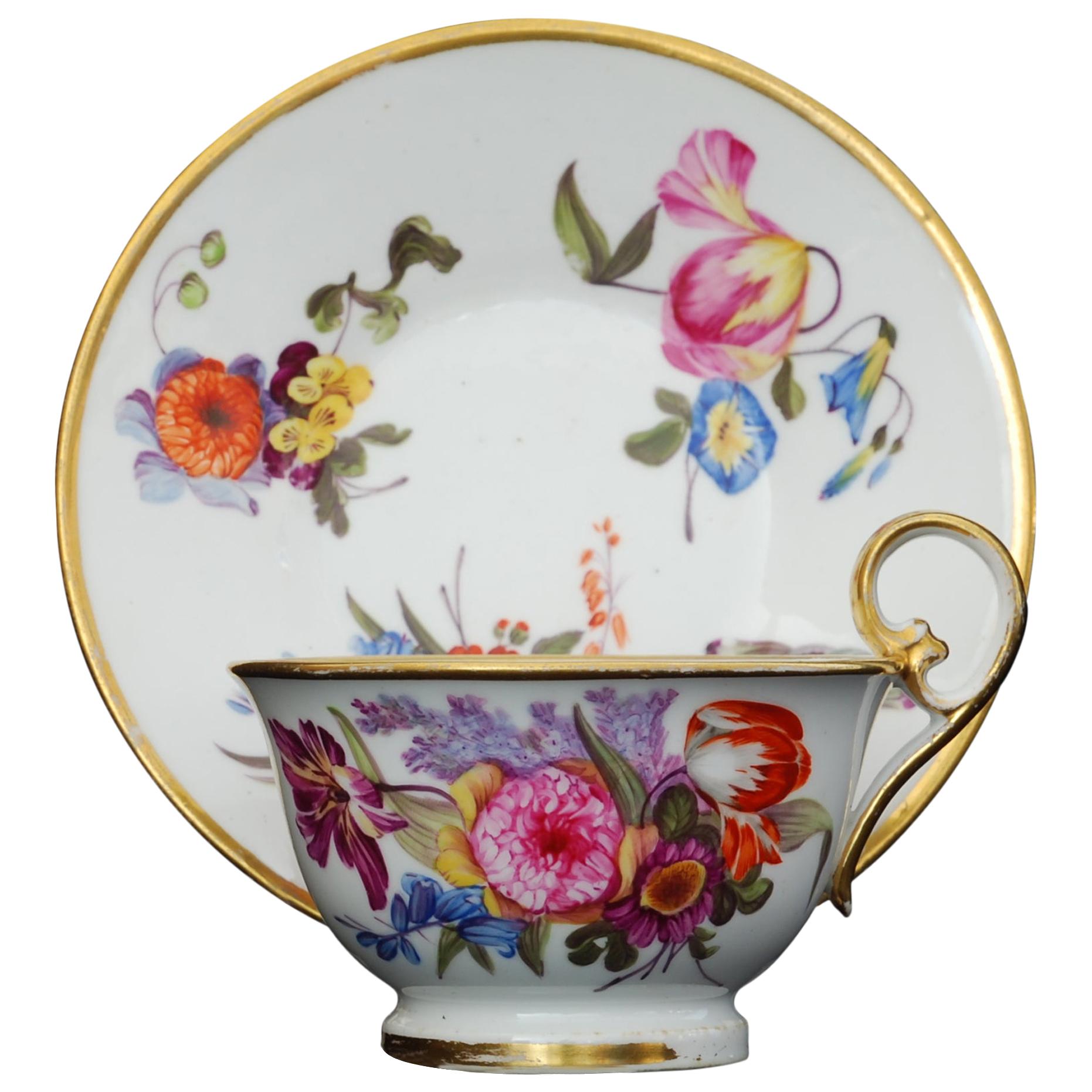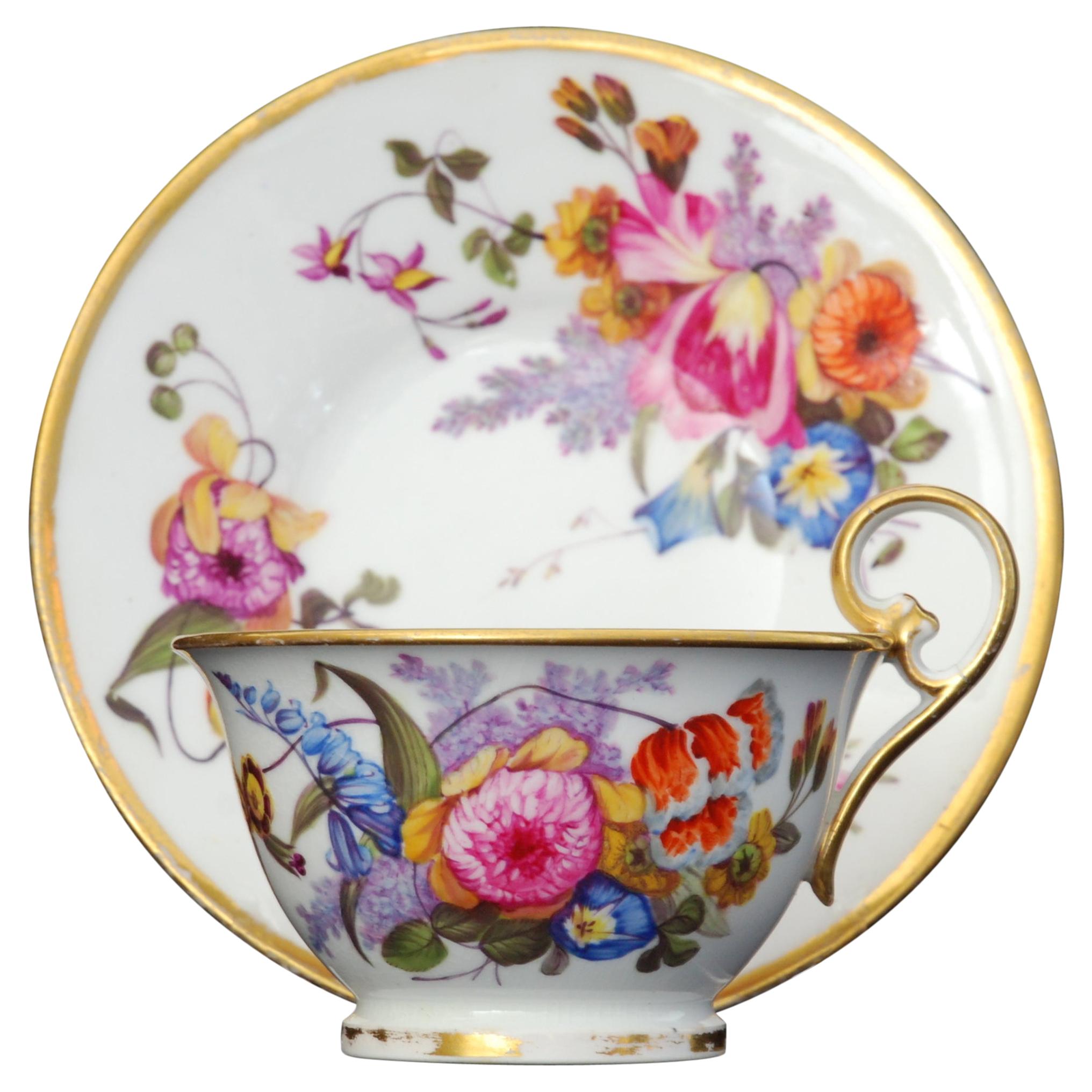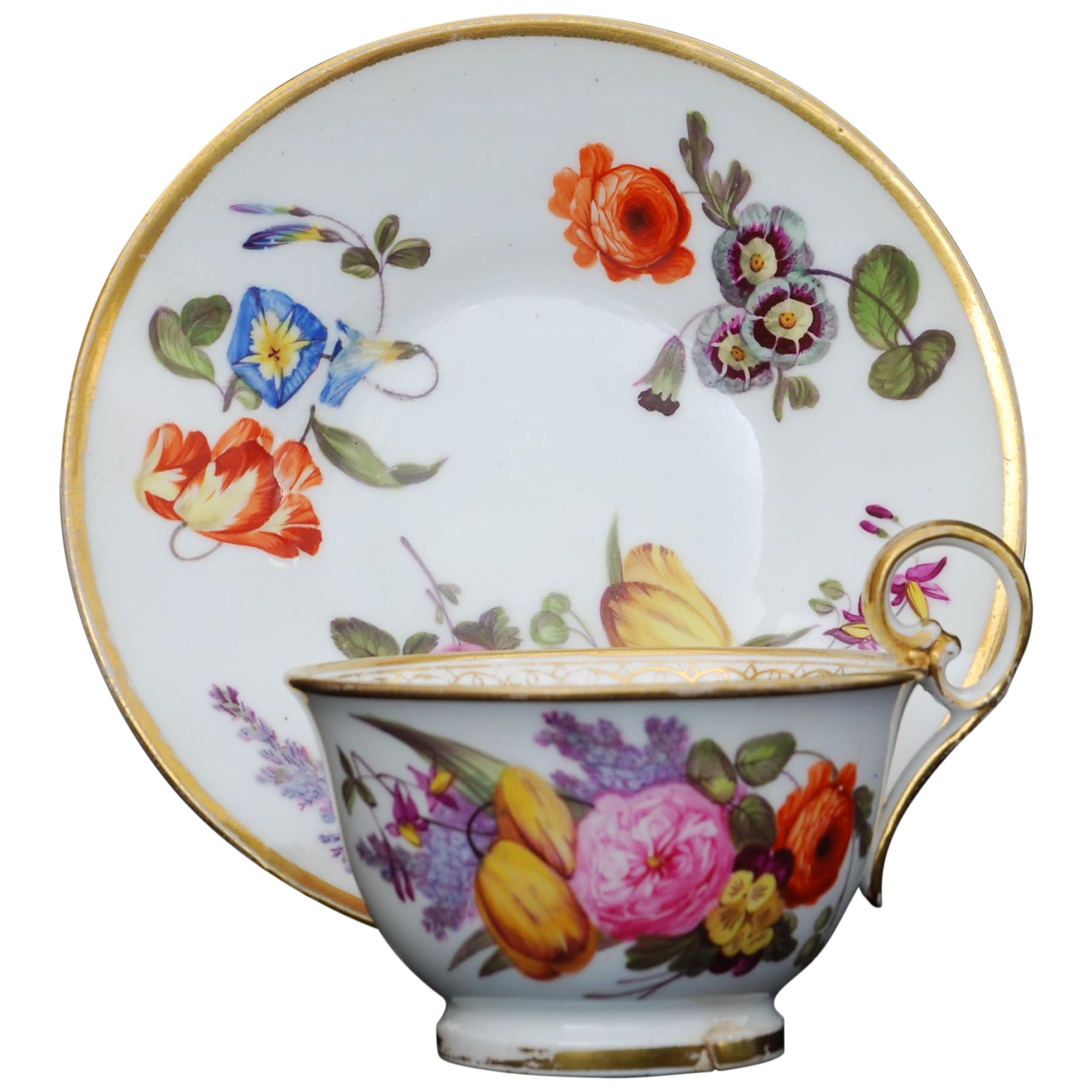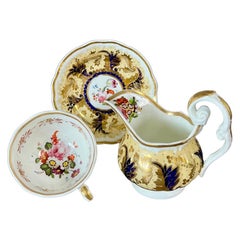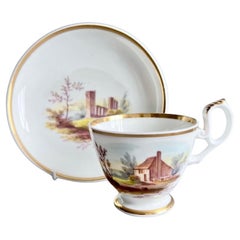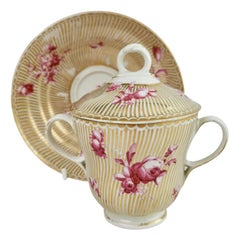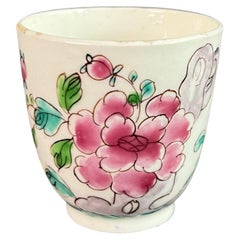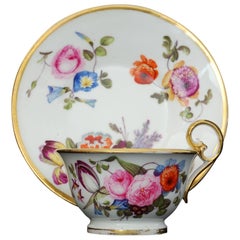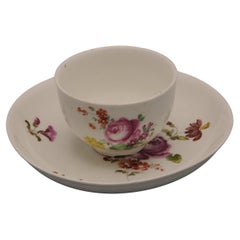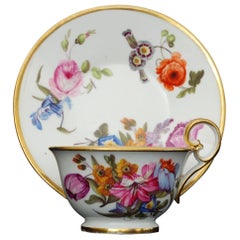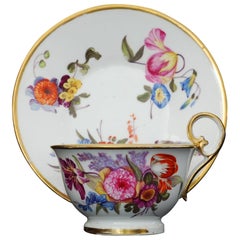Items Similar to Samuel Alcock Porcelain Teacup, White with Flower Sprays, ca 1823
Want more images or videos?
Request additional images or videos from the seller
1 of 13
Samuel Alcock Porcelain Teacup, White with Flower Sprays, ca 1823
$292per set
$365per set20% Off
£221.72per set
£277.15per set20% Off
€253.56per set
€316.95per set20% Off
CA$407.97per set
CA$509.96per set20% Off
A$453.75per set
A$567.18per set20% Off
CHF 236.93per set
CHF 296.17per set20% Off
MX$5,521.63per set
MX$6,902.03per set20% Off
NOK 3,025.99per set
NOK 3,782.49per set20% Off
SEK 2,837.85per set
SEK 3,547.31per set20% Off
DKK 1,892.39per set
DKK 2,365.48per set20% Off
Shipping
Retrieving quote...The 1stDibs Promise:
Authenticity Guarantee,
Money-Back Guarantee,
24-Hour Cancellation
About the Item
A teacup and saucer in the “half orange” shape, white with simple gilt rim and beautiful hand painted flower sprays
Pattern unknown but similar to 1082
Year: ca 1823
Size: cup diameter 10cm (4”), saucer diameter 14.2cm (5.5”)
Condition: excellent, some rubbing to gilt
There are several items available in this design, please see group image and ask for more info if interested.
The Samuel Alcock factory was operative in Staffordshire between 1822 and 1856, after which it was bought by Sir James Duke and Nephews. The factory started as a partnership between the young Samuel Alcock and the older Ralph Stevenson, who provided the factory and capital. Alcock quickly took the factory to great heights, building one of the biggest factories of its time. Alcock jumped on the new Rococo Revival fashion and served a huge new middle class market. The reason we now don't hear much about Samuel Alcock porcelain is that much of it has been mis-identified over the years and attributed to Coalport, Ridgway, Rockingham or others; Alcock did not mark any of his porcelain save a few rare pieces, and the numbering system is difficult to understand. However, the wares are still wide spread and many are of great quality.
This set forms part of the Murray Pollinger Collection of Samuel Alcock Porcelain.
Murray Pollinger was a passionate collector of Samuel Alcock porcelain. He was known as a true gentleman, impeccably dressed, always kind and modest - even some of his porcelain collecting friends had no idea about the size and importance of his collection. From the mid 1980s until shortly before his death in 2022 he collected many thousands of pieces and painstakingly catalogued them. He also went on trips to Staffordshire to discover the history of Samuel Alcock from whatever little documentation has been preserved. Through his painstaking work, Pollinger was able to make sense of the pattern numbering system that was used, and this was a huge step forward in identifying and understanding the porcelain. A website with the results of his research will be made availabe over the course of 2023. While he sold off about half of his collection in 2016, the remaining half is now made available to a new generation of collectors.
Antique British porcelain is never perfect. Kilns were fired on coal in the 1800s, and this meant that china from that period can have some firing specks from flying particles. British makers were also known for their experimentation, and sometimes this resulted in technically imperfect results. Due to the shrinkage in the kiln, items can have small firing lines or develop crazing over time, which should not be seen as damage but as an imperfection of the maker's recipes, probably unknown at the time of making. Items have often been used for many years and can have normal signs of wear, and gilt can have signs of slight disintegration even if never handled. I will reflect any damage, repairs, obvious stress marks, crazing or heavy wear in the item description but some minor scratches, nicks, stains and gilt disintegration can be normal for vintage items and need to be taken into account.
There is widespread confusion on the internet about the difference between chips and nicks, or hairlines and cracks. I will reflect any damage as truthfully as I can, i.e. a nick is a tiny bit of damage smaller than 1mm and a chip is something you can easily see with the eye; a glazing line is a break in the glazing only; hairline is extremely tight and/or superficial and not picked up by the finger; and a crack is obvious both to the eye and the finger. Etcetera - I try to be as accurate as I can and please feel free to ask questions or request more detailed pictures!
- Creator:Samuel Alcock & Co. (Maker)
- Dimensions:Height: 1 in (2.54 cm)Width: 1 in (2.54 cm)Depth: 1 in (2.54 cm)
- Sold As:Set of 2
- Style:Regency (Of the Period)
- Materials and Techniques:
- Place of Origin:
- Period:
- Date of Manufacture:circa 1823
- Condition:Wear consistent with age and use. excellent, some rubbing to gilt.
- Seller Location:London, GB
- Reference Number:Seller: MP-ALC501stDibs: LU4805137391732
About the Seller
5.0
Gold Seller
Premium sellers maintaining a 4.3+ rating and 24-hour response times
Established in 2016
1stDibs seller since 2019
226 sales on 1stDibs
- ShippingRetrieving quote...Shipping from: London, United Kingdom
- Return Policy
Authenticity Guarantee
In the unlikely event there’s an issue with an item’s authenticity, contact us within 1 year for a full refund. DetailsMoney-Back Guarantee
If your item is not as described, is damaged in transit, or does not arrive, contact us within 7 days for a full refund. Details24-Hour Cancellation
You have a 24-hour grace period in which to reconsider your purchase, with no questions asked.Vetted Professional Sellers
Our world-class sellers must adhere to strict standards for service and quality, maintaining the integrity of our listings.Price-Match Guarantee
If you find that a seller listed the same item for a lower price elsewhere, we’ll match it.Trusted Global Delivery
Our best-in-class carrier network provides specialized shipping options worldwide, including custom delivery.More From This Seller
View AllSamuel Alcock Teacup and Milk Jug, Pale Yellow, Gilt and Flowers, ca 1824
By Samuel Alcock & Co.
Located in London, GB
A teacup and saucer with milk jug in the “melted snow” shape with double drop handles, pale yellow ground with rich gilt and cobalt blue acanthus pattern and finely painted flower re...
Category
Antique 1820s English Regency Tea Sets
Materials
Porcelain
$496 Sale Price / set
20% Off
Free Shipping
H&R Daniel Coffee Cup Duo, Plain Shape, White with Landscape, 1825-1830
By H&R Daniel
Located in London, GB
This is an extremely rare and beautiful coffee cup and saucer made by H&R Daniel some time between 1825 and 1830. The set is potted in the "plain" shape and bears pattern no. 4652 wi...
Category
Antique 1820s English Rococo Revival Tea Sets
Materials
Porcelain
$368 Sale Price / set
20% Off
Free Shipping
Chelsea-Derby Chocolate Cup Set, Gilt Stripes, Puce Flowers, Rococo 1770-1775
By Chelsea Porcelain, Chelsea-Derby, Derby
Located in London, GB
This is a beautiful chocolate cup set made by Chelsea-Derby between 1770 and 1775, which was the Rococo era. The set consists of a cup, a saucer and a cover, and is decorated in a st...
Category
Antique 1770s English Rococo Tea Sets
Materials
Porcelain
$940 Sale Price / set
23% Off
Free Shipping
Bow Porcelain Orphaned Coffee Cup, Famille Rose Peony, circa 1755
By Bow Porcelain
Located in London, GB
This is a very charming orphaned coffee cup made by the Bow Porcelain factory in about 1755. The cup is decorated in a Chinese "famille rose" peony pattern. This cup would have been part of a large tea service, and the tiny size shows how expensive coffee was in the 18th Century.
The Bow Porcelain Factory was one of the first potteries in Britain to make soft paste porcelain, and most probably the very first to use bone ash, which later got perfected by Josiah Spode to what is now the universally used "bone china". Bow was the main competitor of the Chelsea Porcelain Factory, but where Chelsea made very fine slipcast porcelain, Bow made a different soft paste porcelain that tended to be softer and could be pressed into moulds. Bow served a larger public generally at lower prices. The factory was only in operation between 1743 and 1774, after which the tradition got incorporated into some of the later famous potteries such as Worcester and Derby.
The cup is unmarked, which is normal for Bow items of this era.
Condition report the cup is in excellent condition without any damage or repairs. There are various glazing imperfections, which are quite normal for porcelain of this era.
Antique British porcelain...
Category
Antique 1750s English Rococo Tea Sets
Materials
Porcelain
$472 Sale Price
20% Off
Free Shipping
Bloor Derby Shell Dish, White, Floral Sprigs Moses Webster, Regency, 1820-1825
By Bloor Derby
Located in London, GB
This is a beautiful one-handled dessert serving dish or "shell" dish made by Derby between about 1820 and 1825 in the Regency era and decorated by Moses Webster. These dishes were to...
Category
Antique 1820s English Regency Serving Bowls
Materials
Porcelain
$460 Sale Price
20% Off
Free Shipping
Minton Teacup Trio, Bath Embossed, Green Flowers Patt. 38/680, ca 1830
By Minton
Located in London, GB
This is an elegant "true trio" consisting of a teacup, coffee cup and saucer, made by Minton in about 1830. The set is decorated with the beautifully hand painted pattern no. 680 con...
Category
Antique 1830s English Rococo Revival Tea Sets
Materials
Porcelain
$300 Sale Price / set
20% Off
Free Shipping
You May Also Like
Tea Cup and Saucer Nantgarw Porcelain, circa 1815
By Moses Webster, Nantgarw Pottery
Located in Melbourne, Victoria
A rare tea cup and saucer in Nantgarw’s superb soft-paste porcelain. Each piece is gilded and decorated in one of the London workshops with superb flower ...
Category
Antique 1810s Welsh Regency Porcelain
Materials
Porcelain
Vienna Porcelain - Rococo Cup and Saucer, late 18th century
Located in DELFT, NL
Vienna Porcelain Coffee or Mokka Cup and Saucer with floral decoration.
Product of the Vienna Porcelain Manufactory (German: Kaiserlich privilegierte Porcellain Fabrique), a porcela...
Category
Antique Late 18th Century Porcelain
Materials
Porcelain
Tea Cup and Saucer Nantgarw Porcelain, circa 1815
By Nantgarw Pottery, Moses Webster
Located in Melbourne, Victoria
A rare tea cup and saucer in Nantgarw’s superb soft-paste porcelain. Each piece is gilded and decorated in one of the London workshops with superb f...
Category
Antique 1810s Welsh Regency Porcelain
Materials
Porcelain
Tea Cup and Saucer Nantgarw Porcelain, circa 1815
By Nantgarw Pottery, Moses Webster
Located in Melbourne, Victoria
A rare tea cup and saucer in Nantgarw’s superb soft-paste porcelain. Each piece is gilded and decorated in one of the London workshops with superb flower ...
Category
Antique 1810s Welsh Regency Porcelain
Materials
Porcelain
Tea Cup and Saucer Nantgarw Porcelain, circa 1815
By Nantgarw Pottery, Moses Webster
Located in Melbourne, Victoria
A rare tea cup and saucer in Nantgarw’s superb soft-paste porcelain. Each piece is gilded and decorated in one of the London workshops with superb flower ...
Category
Antique 1810s Welsh Regency Porcelain
Materials
Porcelain
Tea Cup and Saucer Nantgarw Porcelain, circa 1815
By Moses Webster, Nantgarw Pottery
Located in Melbourne, Victoria
A rare tea cup and saucer in Nantgarw’s superb soft-paste porcelain. Each piece is gilded and decorated in one of the London workshops with superb f...
Category
Antique 1810s Welsh Regency Porcelain
Materials
Porcelain
More Ways To Browse
Stained Glass Dress
Antique Regency Dress
Orange Tea Set
Antique Tea Dress
Hand Painted China Tea Set
Chinese Teacup
Cup Saucer Antique China
Antique Teacups And Saucers
Antique Tea Cup Collection
Silver Rococo Tea Set
British Tea Cups
Alcock Porcelain
Coalport Cup
Staffordshire Tea Cups
Coalport Cup And Saucer
Antique Coalport Cups And Saucers
Ridgway Tea Set
Coalport Teacup
